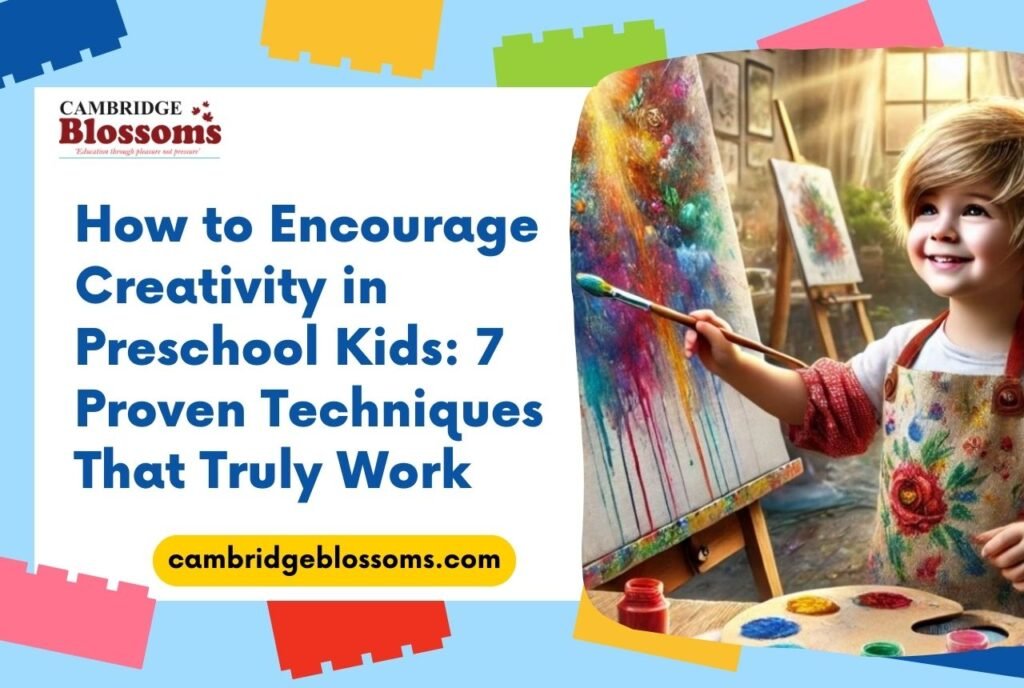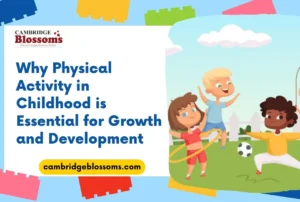How to encourage creativity in preschool kids plays a crucial role in the early stages of childhood development. Encouraging creativity in preschoolers not only enhances their ability to think critically but also aids in problem-solving and self-expression. Studies have shown that fostering creativity in young children can help them develop a strong foundation for academic success, social interactions, and emotional resilience.
In 2025, current research emphasizes the growing need for early childhood creativity initiatives, as it contributes significantly to cognitive, emotional, and social growth.
This article aims to equip parents and educators with proven techniques to boost creativity in preschool kids, ensuring their development in a fun and supportive environment.
Understanding How to Encourage Creativity in Preschool Kids
Creativity in early childhood refers to the ability of young children to think in novel ways, express their thoughts through various mediums, and problem-solve independently. This is vital during the preschool years, as creativity fosters cognitive growth and social-emotional development. As preschoolers explore their surroundings, they learn how to connect ideas and communicate effectively.
Creativity also helps children build confidence, enhances their ability to think critically, and improves their problem-solving skills. While many people associate creativity with the arts, it can also be seen in everyday activities like building with blocks or imagining scenarios during playtime.
Adults play a crucial role in nurturing this creativity. Often, misconceptions about the “right” way to do things limit a child’s natural imagination. As such, it is essential to encourage open-ended thinking and provide a space where children can express themselves freely, without judgment.
7 Proven Techniques to Boost Creativity in Preschoolers
1. Create a Dedicated Creative Space
Designing a space that is entirely for creative activities is a great way to encourage creativity in preschool kids, allowing them to explore and experiment with materials like paint, crayons, and clay. This area should be filled with diverse, age-appropriate tools and should be organized for easy access and cleanup.
Creating an inviting and safe environment is key to encouraging free play. Rotating materials and activities regularly keeps the space fresh and maintains the child’s interest.
2. Provide Open-Ended Materials and Play Opportunities
Open-ended materials, such as building blocks, fabric, and recycled items, can spark imagination and provide endless possibilities for creation. These materials allow children to design and build freely, encouraging creativity in preschool kids through unstructured play.
Research supports the idea that free play encourages creativity by allowing children to develop their own ideas and solve problems independently. Balancing this with structured activities ensures that children receive a variety of learning experiences.
3. Ask Open-Ended Questions
Asking questions that do not have a single correct answer encourages divergent thinking and sparks creativity. For example, “What do you think would happen if we put this in water?” or “How do you imagine this story might end?” When responding to a child’s ideas, avoid judgment and instead encourage exploration by asking follow-up questions.
This strategy is an essential part of understanding how to encourage creativity in preschool kids, as it helps them feel confident in their creative thinking and encourages them to share more of their thoughts.
4. Incorporate Storytelling and Dramatic Play
Dramatic play, whether through role-playing or storytelling with puppets, allows children to engage their imagination fully. Setting up small scenarios, like a pretend grocery store or doctor’s office, gives children the chance to act out real-world situations and is a valuable method when exploring how to encourage creativity in preschool kids.
Encouraging them to create their own stories and characters nurtures their creative thinking and enhances their language skills. This form of play is an excellent outlet for self-expression and creativity.
5. Expose Children to Diverse Experiences
Broadening a child’s experiences can significantly enhance their creativity. Field trips, nature walks, and exposure to different cultures or art forms provide fresh ideas and perspectives. Additionally, virtual experiences such as online museum tours or watching creative documentaries can introduce them to concepts they might not encounter in their everyday life.
Such diverse exposure is a powerful approach in understanding how to encourage creativity in preschool kids, as it challenges their assumptions and encourages new ways of thinking.
6. Embrace the Creative Process, Not Just the Product
Focusing on the process rather than the final product allows children to experiment freely and learn from their mistakes. Encouraging them to try new approaches, even if they seem unconventional, boosts their creativity.
Understanding how to encourage creativity in preschool kids includes praising effort and originality rather than perfection, which fosters a positive attitude toward creative exploration. Children should feel comfortable taking risks and trying out new ideas without the fear of making a mistake.
7. Model Creative Thinking and Behavior
Children learn by observing the adults around them. Parents and educators who model creative behavior—whether it’s experimenting with new ideas, solving problems in creative ways, or engaging in hands-on artistic activities—can inspire the same in children.
Sharing your own creative process, discussing how you tackle challenges, and showing excitement for new ideas can motivate preschoolers to explore their own creativity.
Cambridge Blossoms: Nurturing Creativity in Guwahati’s Preschoolers
Cambridge Blossoms, a leading preschool in Guwahati, stands at the forefront of nurturing creativity in young learners. The school employs a unique curriculum designed to foster creativity and imagination through a variety of engaging programs. These include art workshops, dramatic play sessions, and hands-on science experiments, all aimed at sparking curiosity and creativity in preschoolers.
In addition to local cultural integration, Cambridge Blossoms adheres to international standards of early childhood education. The school offers a well-rounded environment where children can explore diverse experiences, both locally and globally. Parents have praised Cambridge Blossoms for its holistic approach to early childhood development, with many noting how their children’s creativity flourished in such a supportive setting.
Measuring Progress: Signs Your Child’s Creativity Is Flourishing
Recognizing creative development in preschoolers can be seen through various signs: the ability to think outside the box, engagement in imaginative play, and expression of ideas in unique ways. Observing a child’s creative journey might not always follow a linear path, but noting their willingness to experiment and their growing problem-solving abilities can be strong indicators.
Celebrating these moments and sharing observations with teachers can further enhance the child’s development.
Final Thoughts on How to Encourage Creativity in Preschool Kids
Nurturing creativity in preschoolers is an essential part of their development that yields long-term benefits, including enhanced cognitive abilities, problem-solving skills, and emotional intelligence. By implementing the techniques outlined above, parents and educators can create a supportive environment that encourages creative exploration.
Embracing the creative process, celebrating effort, and providing diverse learning opportunities will help shape the creative minds of tomorrow. Let’s all commit to fostering an environment where young children can unleash their full creative potential.




